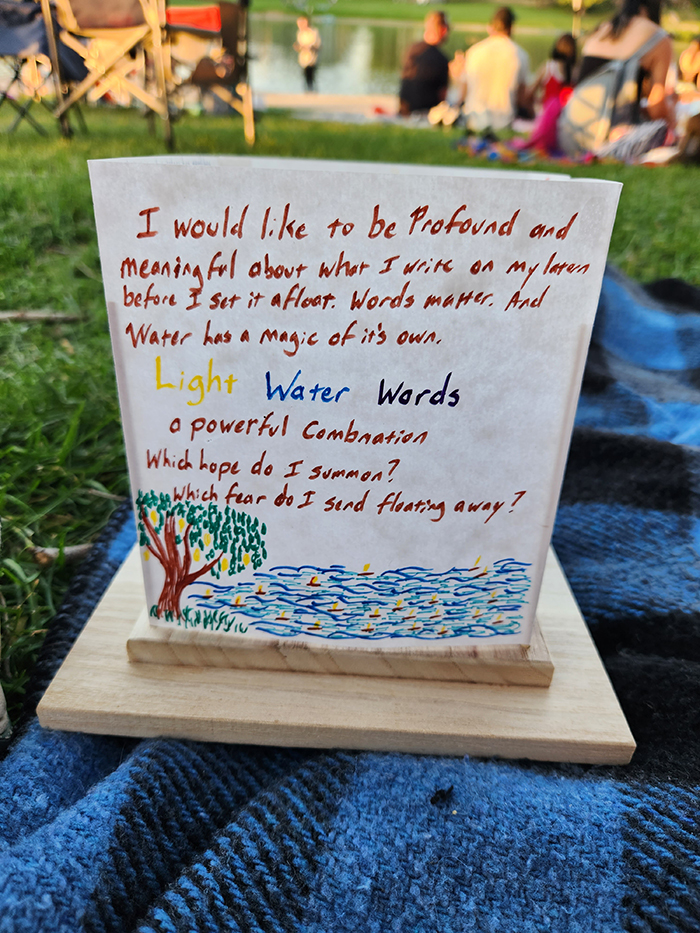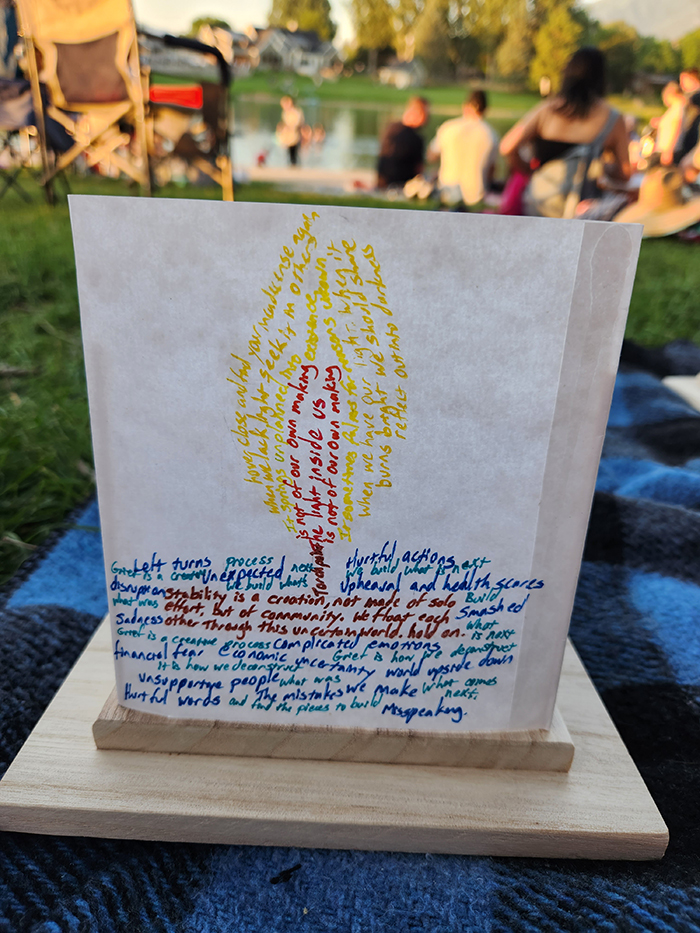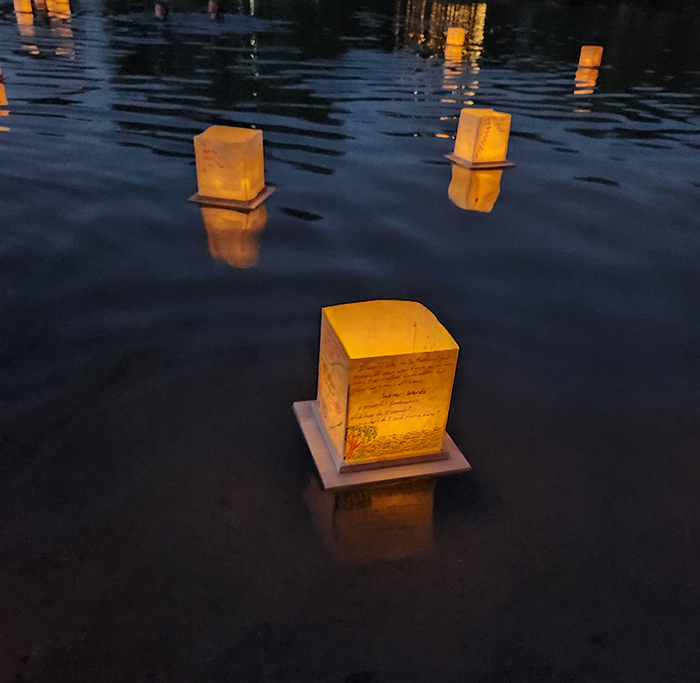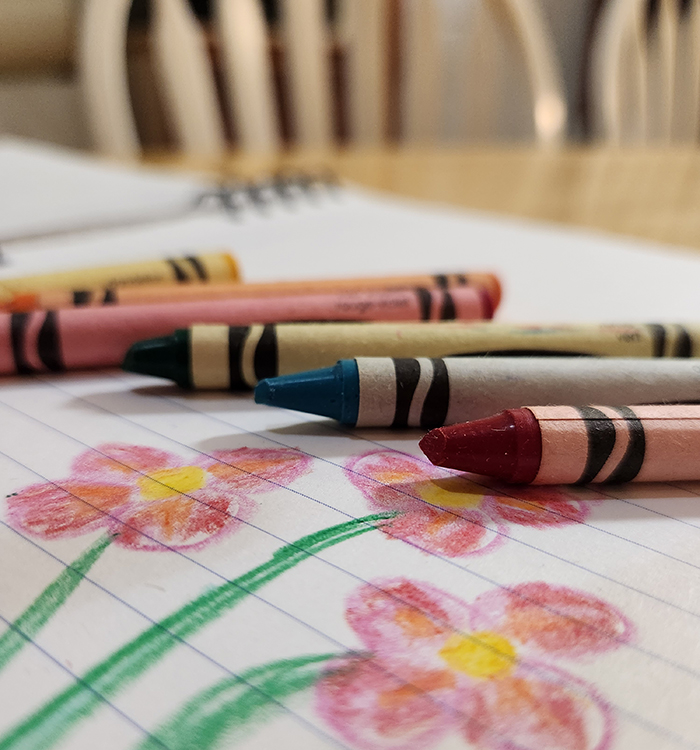Managing Anxiety and Depression as Part of Life
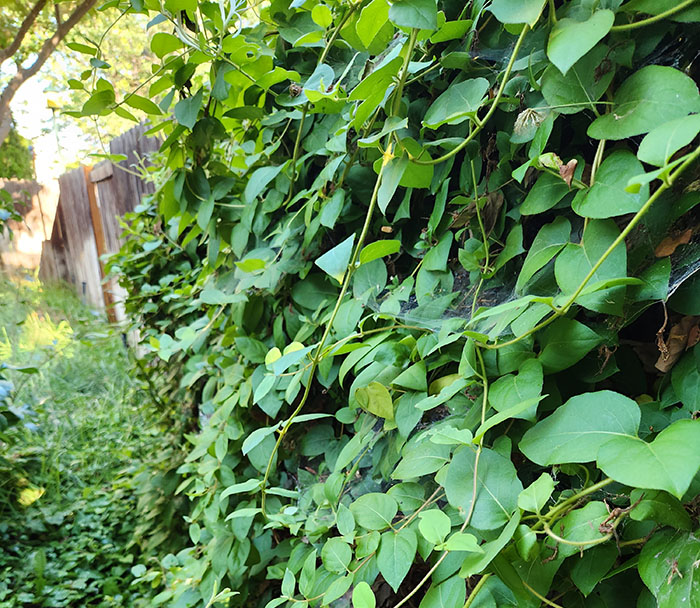
In 2013 I wrote a post titled Finding Levers to Remove Anxiety and Depression. I asked my Patreon supporters if they’d be interested in a ten-years-later update on the things I said there. They said yes, so here I am thinking deeply about where I was, where I am (a much better place), and how I traveled between the two.
I feel so much compassion for my ten years younger self. She thought she was in a field with a few stubborn rocks (anxiety and depression) that she needed to try to remove. If she could find the right levers, they could be lifted out and life could continue smoothly. Instead she was on the edge of a sinkhole that became a deep and treacherous pit full of tangles before we found ways out. March of 2013 was when everything started sliding, not just for the child mentioned in the post, but for the other three kids and me as well. At that time I did not understand how much depression and anxiety had formed who I was and how much more I had left to learn from it. I could spend thousands of words on the details of the various meltdowns, collapses, attempted scaffolds, and dark pits that we traversed, but that long and winding tale does not actually address the deep questions I think my Patreon supporters hope to find an answer for, the reason they are interesting in a ten-years later perspective.
The big questions for anyone who suffers from anxiety and/or depression are variations on: “How do I get out? How do I find a place that is stable? How do I build a life where anxiety and depression do not constantly disrupt everything?” I wish my ten years of experience provided me with a one-size-fits-all answer. Instead what I have are a collection of accumulated knowledge or lessons that might be useful components for others to build their own path forward.
One thing I understand differently now than I did ten years ago is that anxiety and depression are the result of a survival mechanism turned invasive. Anxiety, when kept in bounds, is our ability to plan ahead for contingencies and respond to emergencies. Depression, when kept in bounds, is the self-protective impulse to curl inward and give ourselves space to rest and heal. If something throws off the ecosystem of our lives, these adaptive tools become like kudzu or wisteria that grows fast and strangles everything else. Like plants, anxiety and depression grow or shrink in response to actions their host takes or doesn’t take. They have roots or tentacles that may reach deep. And sometimes they even seem to fight back against our attempts to extricate ourselves. They resist dying when we attempt to extinguish them. Sometimes they become so familiar, so intertwined in our existence, that we ourselves resist the removal of our overgrown defenses. On occasion the anxiety and depression become so enmeshed in the very structure of our lives that the only way to remove them is to take down the wall.
Another thing that I now understand is that both anxiety and depression are symptoms, not the disease. Saying “she’s depressed” or “they have anxiety” is akin to saying that someone has a fever. A fever is normal body temperature regulation run wild. A fever is definitely a problem to be solved and it can be an emergency requiring rapid intervention, but ultimately a fever is a symptom it is not an explanation. Once the fever is under control, more information must be gathered before a treatment plan can be made to make sure the fever does not flare up again. A fever might be the result of heat stroke, or a bacterial infection, or a viral flu or something else entirely. If you apply the wrong treatment the patient may actually get much worse instead of better.
Our challenge as the gardeners of our own lives is to keep these prone-to-become-invasive plants bounded and contained. I’ve learned much about what throws my internal ecosystem out of balance and allows anxiety or depression to grow rampant.
Situational pressure: A bad work environment, caretaking responsibilities, high pressure environments, constant deadline pressure, grief, and lack of rest are all situational elements which can over fertilize anxiety and depression.
Chemical and Genetic factors: We all have different genetics and brain chemistry. Some of us are simply more prone to having anxiety and depression than others because our brains have incredibly fertile ground for it to grow. If depression or anxiety “run in the family” then it is more likely that your anxiety and depression has some roots in chemistry and genetics
New Trauma: This word conjures up mental pictures of combat veterans, domestic abuse, or vehicular accidents. If you haven’t experienced those, then you might not think this applies to you. But trauma can be much more subtle. Anything that shakes your world, causes upheaval can be traumatic in your life.
Old Trauma: These are things that happened to you long ago that maybe you don’t think much about, but they’re like pockets of buried fuel which can go boom if disturbed. Or sometimes they simply sit underground nourishing your anxiety and depression in ways you can’t see.
Ingrained life lessons: These are the internalized adaptive lessons from childhood that we’re still putting into our adult lives even though they don’t apply anymore. For example: Your first grade teacher taught you to crave recognition in the form of gold stars and you’re still subconsciously trying to get metaphorical gold stars from your boss. The lack of gold stars creates anxiety or depression because it is an expectation unmet.
These are not the only growth mediums for depression and anxiety, but they suffice to make the point for the purposes of this discussion.
For me, I definitely have some genetic factors (grandma was “a worrier” as was her mother before her, as is my dad, as am I). My depression tends to be situationally triggered. I get depressed when one or more of my people is in a full-bore mental health meltdown or if I am in a situation that matters a great deal to me, but I’m powerless to affect the outcome. My anxiety definitely has roots buried deep in old trauma and ingrained life lessons.
I can talk about all of it quite dispassionately in prose only because I did all the exploratory work to trace feelings back to their sources. I became a spectator of my own thoughts and actions. On the day I found myself sobbing at the trailer for Annie because I couldn’t believe the sun would come out tomorrow, I finished my cry and then the next day I started digging to figure out where that feeling was coming from. Bit by bit I’ve cobbled together a comprehension of my particular anxieties and depressions. My understanding was greatly helped by many excellent friends, my husband who is quite insightful, and lots of reading. I benefited from conversations with fellow “gardeners” who were coping with their own anxiety and depression. Tiny moments of shared commiseration about anxiety over making phone calls changes the experience of having anxiety over making phone calls and sometimes allows the phone calls to get made.
Anxiety and depression are always complex and individual. Some genetic predisposition teams up with a bad work situation and a trauma until suddenly your life is completely strangled with depression and coping strategies both good and bad. Even worse, one aspect of life falling out of balance can cause others to go wobbly. Grief and trauma have been shown to cause actual chemical changes in the brain, literally creating a growth medium for anxiety and depression where none existed before. Additionally, someone who is experiencing deep depression or anxiety actually has reduced capacity for rational decision making and executive function. It is literally harder to think clearly when you’re wrapped in depression or anxiety.
This is why outside help can be so crucial to bringing things back under control. It is why professional interventions for both anxiety and depression tend to be multi-pronged: medication AND therapy AND behavioral changes AND developing emotional self-management skills. It also explains why some people are completely convinced that you can solve your depression by simply going outdoors more, because they had a situational depression that really was solved by simple behavioral changes. Which is like saying all fevers can be solved by sitting in the shade and drinking water because that was what resolved their incipient heat stroke.
If you are in the midst of a tangle of depression or anxiety, impaired in your ability to move or think, here is the most encouraging thing that the past ten years has taught me: It is all the same tangle. Even if your life feels like thousands of problems and challenges. If you find one spot to untangle and clip back, you will uncover the next small thing. Over time, those small things accumulate and you have cleared enough space to do bigger things. I have real world experience that this process does work on literal vines as I’ve spent the last year or so trying to tame some overgrown wisteria. The plant was winning for a long time. It grew back vigorously if I left it alone for even a week. Sometimes it felt like I was spending all my energy just fighting growth without making progress on the core. Yet eventually the plant was brought in line with my plan. I just had to be persistent. Simple persistence and not giving up is the beginning of so many mental health triumph stories. That and being willing to unashamedly celebrate the successes of such things as taking a shower on a bad brain day, or doing both the dishes and laundry on the same day, or making that phone call.
Anxiety & depression management is deploying tools as needed. Sometimes you need clippers, sometimes a shovel, sometimes electric hedge trimmers, occasionally a backhoe. You might need to engage outside expertise or help. You might need a team or you might work best as a solitary gardener. Use the tools that are effective now, knowing you may switch up later. Some people need medication as an interim tool, a leg up. Others need medication as an ongoing regimen to maintain ecosystem balance. There are a wide variety of available therapies, perform experiments to see which ones are helpful with your particular tangle at this particular time in your life. Be prepared for some of your experiments to “fail” by not getting the results you hoped for. Each “failure” provides you with data about what doesn’t work for you and informs the experiment you try next.
When you are gardening, one of the best ways to control invasive plants is to cultivate other plants. You can spend a lot of energy beating back and rooting out anxiety and depression, but if the result is only bare dirt, they’ll simply return to fill that gap. If you spend some energy growing other things, then those other things will naturally help to keep the invasive anxiety and depression in check. In my life I carefully cultivate writing, an array of friendships, community connections, three cats, religious practice, and an actual garden with green things in it. Maintaining all of these things (and others that I haven’t mentioned) takes a lot of effort. Some days I feel tired with the work of all of it. But I can clearly see that the work I spend maintaining this healthy abundance means less work spent on fighting invasive anxiety or depression.
A very important lesson I learned is that the work isn’t done when I’ve achieved a life state where anxiety and depression are under control or even seem completely gone. Life will always change. Those changes affect my emotional and mental ecosystem. Part of my ongoing work as the gardener of my own mental health is to recognize the subtle signs of ecosystem strain. I’m not just on the watch for imminent collapse, but also for the precursor behaviors that emerge before I’m even consciously aware of anything being wrong. Just as I’ve mapped and understood where my anxiety and depression have their roots, so I learn that precursor A tends to indicate imbalance B. When my email inbox gets out of control that means I’m not tracking and managing tasks at full capacity and I should figure out why. Flashes of anxiety accompanied by intrusive thoughts usually means I’ve overtaxed myself socially and I need serious introvert time. Dissociation via scrolling or binging are symptoms of many things, sometimes I just need to rest, sometimes I am emotionally processing something, sometimes I’ve no idea why, so I just need to increase my efforts to grow good things. Balance correction is much easier when I catch it early.
I am so glad to be where I am instead of where I was ten years ago. I am grateful for the knowledge I gained in traveling over all of that rough ground. I would not be the person I am today without it. This is not the same as having no regrets, because I have lots of decisions where I wonder if I picked the right course. Particularly over parenting. Could I have done better by my kids? Dwelling on such questions is one of the ways that I can throw myself out of balance, fertilizing my own anxiety. Mostly it is best to let the past rest and focus instead on where I am now and how I want to move forward from here.
My learning process is far from over. I will be quite interested to see what I have to say about anxiety and depression in another ten years.
The topic for this post was chosen by my Reader and Creative Community level supporters of my Patreon. If you have a topic you’d like to see me cover, becoming a supporter allows you to participate in the choosing of my next topic. Thank you for reading!

